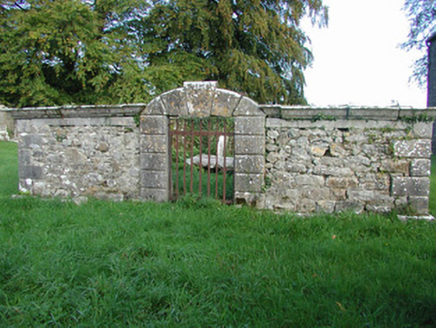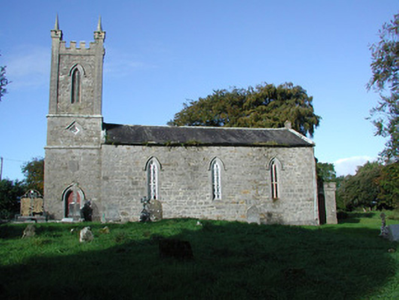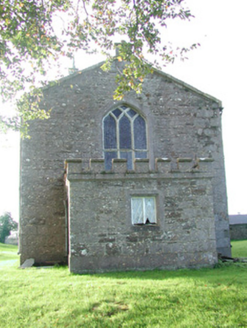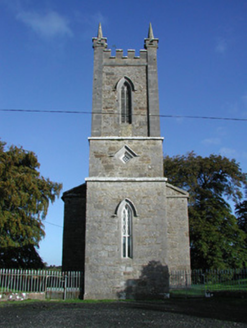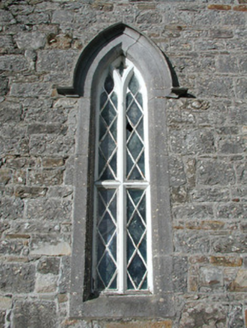Survey Data
Reg No
14801003
Rating
Regional
Categories of Special Interest
Architectural, Artistic, Social, Technical
Original Use
Church/chapel
Date
1810 - 1830
Coordinates
219235, 230840
Date Recorded
04/10/2004
Date Updated
--/--/--
Description
Detached former Church of Ireland church, built c.1820, with three-bay nave, three-stage tower to south and vestry to north. Situated within its own grounds. Church is no longer in use. Pitched slate roof with terracotta ridge tiles and chimneystack over northern gable. Random coursed stone walls with tooled stone plinth course. String courses to tower with pinnacles and crenellations. Crenellations to parapet of vestry. Pointed-arched window openings to nave with Y-tracery and diamond-paned glazing bars. Diamond-shaped window openings with hoodmouldings to central stage of tower. Pointed-arched louvred openings to belfry with hoodmouldings. Square-headed window opening to vestry with tooled stone surround, hoodmoulding and diamond-paned windows. Pointed-segmental chancel window with Y-tracery. Pointed-arched door opening to tower with tooled stone surround, hoodmoulding, timber blind tracery panelled double doors and stone threshold. Pointed-arched door opening to vestry with timber battened door. Church set within graveyard with variety of stone grave markers. Enclosed private burial plot to west of church, bounded by random coursed stone wall with tooled coping and accessed though flat-arched portal opening with wrought-iron gate. Tower of church is flanked by sweeping wrought-iron railings set on a tooled stone plinth with gates, which bound graveyard to south.
Appraisal
Lis Church of Ireland Church is situated at a distance from Ballycumber village and opposite the former Lis national school. The building, with its three-stage pinnacled tower, lancet windows and fine stone walls, is surrounded by a graveyard with a number of stone grave markers, of which the earliest date visible is 1767. The eighteenth-century grave marker suggests that the current church was erected on the site of an earlier chapel. The socially significant graveyard enhances the modest church, which though no longer used for divine worship, remains an integral part of the locality's architectural heritage.
